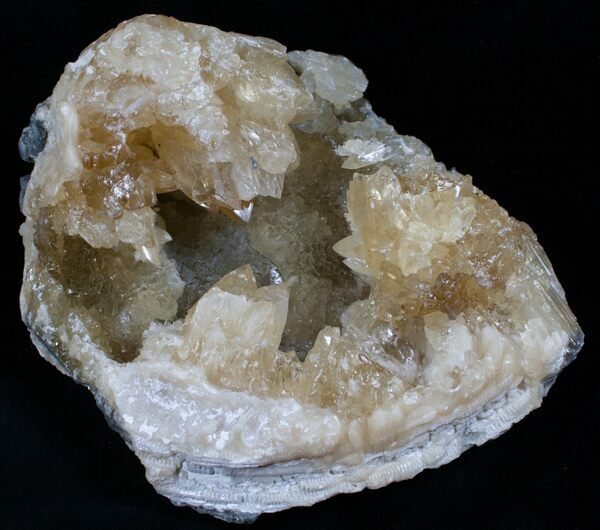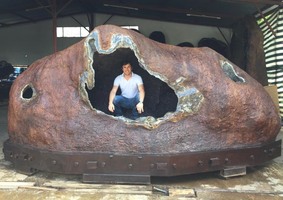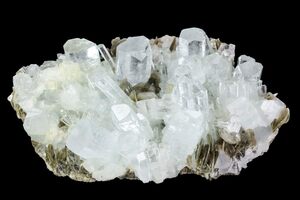How Do Geodes Form?
Geodes are more or less spherical or egg-shaped rocks containing a hollow cavity which is lined with crystals. They form in both igneous and sedimentary rocks. There are two major steps in their formation.
In igneous (volcanic) rocks the hollow space is the result of a gas bubble becoming trapped inside of cooling magma. The amethyst geodes found within ancient basalt flows in Brazil & Uruguay are a good example of this.
In sedimentary rocks the hollow space is often formed by groundwater dissolving an existing structure within rock. For example in the case of Keokuk geodes from Iowa, concretions within the surrounding shale are dissolved, leaving round voids. Sometimes the cavity might form due to a fossil being dissolved or due to decaying organic matter leaving a gas pocket in the sediment.
In the second stage of geode formation, minerals are deposited on the walls of the cavity. These minerals are present in groundwater or hydrothermal fluids which flow through the host rock. Temperature or chemistry changes cause minerals to precipitate out of the water, hardening on the walls of the cavity. The first layer in many geodes is often chalcedony, a micro-crystalline form of quartz.
This precipitation will often recur many times due to cyclical changes in temperature or fluid chemistry. As this process reoccurs over and over, inwardly pointing crystals will form.
Various varieties of quartz crystals are the most common minerals found inside of geodes, but calcite, pyrite, hematite, barite, smithsonite and a host of other minerals can be found.
It is not uncommon for geodes to be found individually, already liberated from the host rock in which they formed. The chalcedony that lined the geode is more durable than the host rock. So, as the rock decomposes or erodes, just the solid geodes are left.
- A hollow cavity is formed in the rock.
- Minerals precipitate out of a groundwater forming crystals on the walls of the cavity.
A Hollow Space Forms
In igneous (volcanic) rocks the hollow space is the result of a gas bubble becoming trapped inside of cooling magma. The amethyst geodes found within ancient basalt flows in Brazil & Uruguay are a good example of this.
In sedimentary rocks the hollow space is often formed by groundwater dissolving an existing structure within rock. For example in the case of Keokuk geodes from Iowa, concretions within the surrounding shale are dissolved, leaving round voids. Sometimes the cavity might form due to a fossil being dissolved or due to decaying organic matter leaving a gas pocket in the sediment.
Formation Of Crystals
In the second stage of geode formation, minerals are deposited on the walls of the cavity. These minerals are present in groundwater or hydrothermal fluids which flow through the host rock. Temperature or chemistry changes cause minerals to precipitate out of the water, hardening on the walls of the cavity. The first layer in many geodes is often chalcedony, a micro-crystalline form of quartz.
This precipitation will often recur many times due to cyclical changes in temperature or fluid chemistry. As this process reoccurs over and over, inwardly pointing crystals will form.
Various varieties of quartz crystals are the most common minerals found inside of geodes, but calcite, pyrite, hematite, barite, smithsonite and a host of other minerals can be found.
Finding The Geodes
It is not uncommon for geodes to be found individually, already liberated from the host rock in which they formed. The chalcedony that lined the geode is more durable than the host rock. So, as the rock decomposes or erodes, just the solid geodes are left.
 Reviews
Reviews







